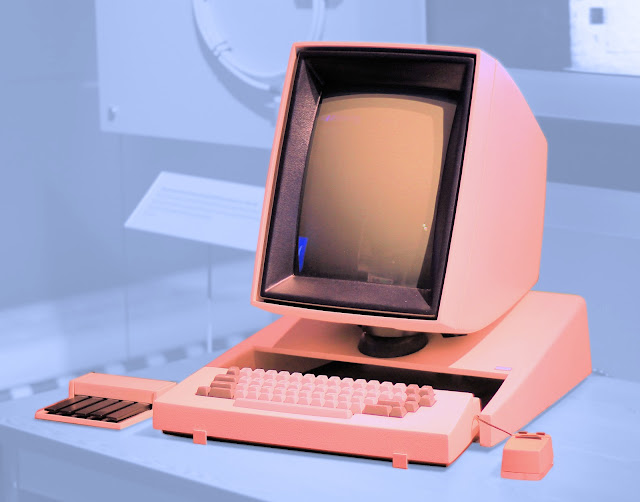Released March 1973
The early days of personal computing including a lot of false starts. Ideas that should have propelled their progenitors to dominance often failed to hit the mark. One such company with great ideas but limited success was Xerox.
Still know today for its photocopiers and printers, Xerox decided decades ago that that future of the office was paperless. Because Xerox was very much wedded to paper, the idea of a paperless future would amount to nothing less than extinction. But throughout this part of its history, Xerox was torn between the forward-looking technologists and the backwards-looking pragmatists.
Somewhere out of this internal struggle, the Xerox Alto was born in 1973. It was the first computer system designed from the start to use a graphical user interface, inspired to a large degree by Doug Engelbart’s Mother of All Demos five years previously. Xerox engineers realised that at some point computer systems would move beyond the realm of engineers in white coats to something that anyone could use, based in part around digitising everyday metaphors into skeuomorphic forms.*
 |
| Xerox Alto |
The challenges of building a recognisably modern computer system in 1973 were immense. One major one was the lack of microprocessors – the Motorola 68000, Intel 8086, MOS 6502 and Zilog Z80 were still years away. Instead, Xerox engineers use four Texas Instruments 74181 ALUs to do the hard work. Added to this was up to 512Kb of RAM and a 606 x 808 pixel monochrome display and a 3-button mouse. One of the most distinctive features was the large 12” portrait display that emulated a piece of paper, but less obvious at the time was the Alto’s Ethernet interface that allowed it to talk to other systems.
A lot of the Alto’s UI comprised of tables and text rather than icons and graphics. Still, it was good enough for preparing documents, drawing pictures, designing integrated circuits and playing games. These were all potentially useful things to do, but the Alto was fearsomely expensive – costing an equivalent of $125,000 in 2023 money.
The Alto was massively ahead of its time – it would take another decade or so for the technologies to start to become affordable. It also wasn’t a sales success, with only around 2000 units shipping, including those used by Xerox themselves.
Despite the small numbers built, the Alto was massively influential. The Apple Lisa and later the Macintosh were directly influenced by the work happening at Xerox, and more indirectly Windows and just about every other graphical user interface was too. For Xerox, the Alto was eventually succeeded by the Star in 1981, but this was only a limited success. Xerox itself was never fully wedded to the idea of the paperless office, and by the mid-1980s the pendulum was swinging back to the predictable markets of photocopies and printers.
Today the Alto exists in a few museums and private collections, it never was the sort of thing you could take home. Sadly the Alto and Star are largely forgotten, despite pioneering many of the technologies we take for granted today. Being first to market does not always means being successful, and that was certainly the case with Xerox...
* We apologise for the overuse of ancient Greek.
Image credits:
Michael Hicks via Wikimedia Commons – CC BY 2.0

No comments:
Post a Comment